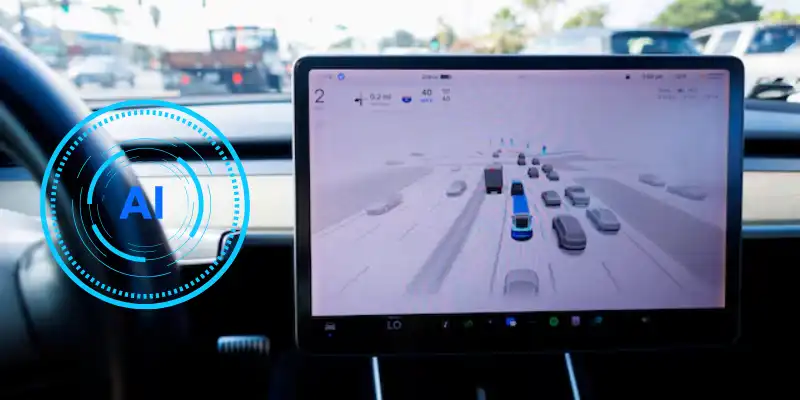In the rapidly evolving landscape of artificial intelligence, neural networks have emerged as a cornerstone for tackling complex challenges across various domains. Tesla’s application of deep neural networks to its Autopilot system exemplifies the forefront of this technology, harnessing sophisticated algorithms to enhance vehicle perception, control, and safety. This blog post delves into the intricacies of Tesla’s neural network systems, including their architecture, capabilities, and the immense computational power required to train them.
1. Deep Neural Networks: The Backbone of Modern AI
Deep neural networks (DNNs) are a subset of machine learning models inspired by the human brain’s structure and function. They consist of multiple layers of interconnected nodes or “neurons,” each layer learning progressively more abstract features from input data. These networks are particularly adept at handling complex tasks such as image recognition, natural language processing, and decision-making.
2. Neural Networks for Vehicle Perception
Tesla’s neural networks are integral to the Autopilot system, where they perform crucial functions related to vehicle perception:
2.1. Per-Camera Networks
- Semantic Segmentation: These networks analyze raw images from vehicle cameras to classify each pixel into predefined categories, such as road, vehicle, pedestrian, or signage. This segmentation helps the system understand the scene’s context, which is vital for making informed driving decisions.
- Object Detection: By identifying and locating objects within an image, object detection networks enable the vehicle to recognize and track other vehicles, pedestrians, and obstacles. This capability is essential for collision avoidance and safe navigation.
- Monocular Depth Estimation: These networks estimate the distance of objects from the camera using a single image. Depth estimation helps the vehicle gauge the spatial relationship between objects, enhancing its ability to maneuver safely in various environments.
2.2. Birds-Eye-View Networks
- Top-Down View: By integrating video feeds from multiple cameras, these networks generate a comprehensive top-down view of the surroundings. This birds-eye perspective provides a clear layout of the road, static infrastructure (like road signs and barriers), and 3D objects.
- Road Layout and Infrastructure Mapping: The birds-eye-view networks help the vehicle understand its position within a detailed map of the road and nearby infrastructure. This understanding supports advanced navigation and decision-making capabilities, such as lane changes and turn maneuvers.
3. Training Neural Networks: An Intensive Process
Training neural networks involves feeding them vast amounts of data and refining their parameters to minimize errors and improve performance. For Tesla’s Autopilot system, this process is particularly intensive:
3.1. Real-World Data Collection
- Fleet Data: Tesla collects data from its fleet of millions of vehicles in real time, capturing diverse driving scenarios across various environments and conditions. This extensive dataset is crucial for training robust and generalizable neural networks.
- Iterative Learning: The networks learn from real-world scenarios, continuously improving their performance through iterative training. The more data the networks process, the better they become at handling complex driving situations.
3.2. Computational Requirements
- Network Architecture: A full build of Tesla’s Autopilot neural networks involves 48 distinct networks, each specialized for different aspects of perception and control.
- Training Time: Training these networks requires approximately 70,000 GPU hours. This immense computational power reflects the complexity of the models and the volume of data they need to process.
4. Challenges and Innovations in Neural Network Training
Training neural networks for autonomous driving involves several challenges and innovations:
4.1. Data Diversity and Quality
- Complex Scenarios: Neural networks must be exposed to a wide range of driving conditions, including different weather patterns, road types, and traffic scenarios. Ensuring data diversity is essential for creating models that perform reliably in various situations.
- Annotation and Labeling: Accurate labeling of data is crucial for supervised learning. This process involves annotating images with information such as object boundaries and class labels, which can be labor-intensive and requires high precision.
4.2. Model Optimization
- Efficiency: As neural networks grow in complexity, optimizing their performance becomes increasingly important. Techniques such as model pruning, quantization, and hardware acceleration are employed to improve efficiency and reduce computational demands.
- Real-Time Processing: For autonomous driving, the ability to process data and make decisions in real time is critical. Optimizing network architectures and algorithms to meet these requirements is a key focus of ongoing research.
4.3. Safety and Reliability
- Validation and Testing: Extensive validation and testing are conducted to ensure the networks’ safety and reliability. This includes simulated testing, on-road evaluations, and continuous monitoring to detect and address any issues that arise.
- Ethical Considerations: The deployment of neural networks in autonomous vehicles raises ethical considerations, such as ensuring fair and unbiased decision-making and addressing potential risks associated with AI-driven systems.
5. The Future of Neural Networks in Autonomous Driving
As neural network technology continues to advance, several future developments are on the horizon:
5.1. Enhanced Perception Capabilities
- Multimodal Integration: Combining data from various sensors, such as cameras, radar, and lidar, with neural network models can enhance perception capabilities and improve the accuracy of object detection and depth estimation.
- Context-Aware Learning: Future neural networks may incorporate more context-aware learning, allowing them to better understand and adapt to dynamic driving environments and complex scenarios.
5.2. Scalable and Efficient Models
- Distributed Training: Advances in distributed training techniques may enable faster and more efficient training of neural networks, reducing the time and computational resources required.
- Adaptive Networks: Developing adaptive neural networks that can dynamically adjust their architecture and parameters based on real-time data could lead to more flexible and responsive AI systems.
5.3. Improved Safety and Ethics
- Robust Safety Measures: Ongoing research will focus on enhancing safety measures, including fail-safes, redundancy, and ethical decision-making frameworks to ensure the responsible deployment of autonomous systems.
- Collaborative AI: The integration of collaborative AI systems, where multiple AI entities work together to achieve common goals, may further advance the capabilities and reliability of autonomous driving technology.
Tesla’s application of neural networks in its Autopilot system represents a significant leap forward in AI technology, pushing the boundaries of what is possible in vehicle perception and control. By leveraging advanced algorithms, real-world data, and immense computational power, Tesla continues to lead the way in developing cutting-edge solutions for autonomous driving. As research and innovation progress, the future of neural networks promises even greater advancements, shaping the next generation of intelligent and autonomous systems.


